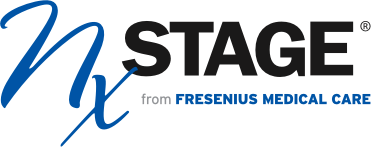Improved Efficiencies and Lower Cost
Bring economic value to your organization through the use of one simple, yet versatile system used to deliver renal replacement therapy throughout the continuum of patient care while in the ICU.
The NxStage System One can be used whether your patients require continuous 24-hour therapy or are stable enough to endure intermittent treatments.
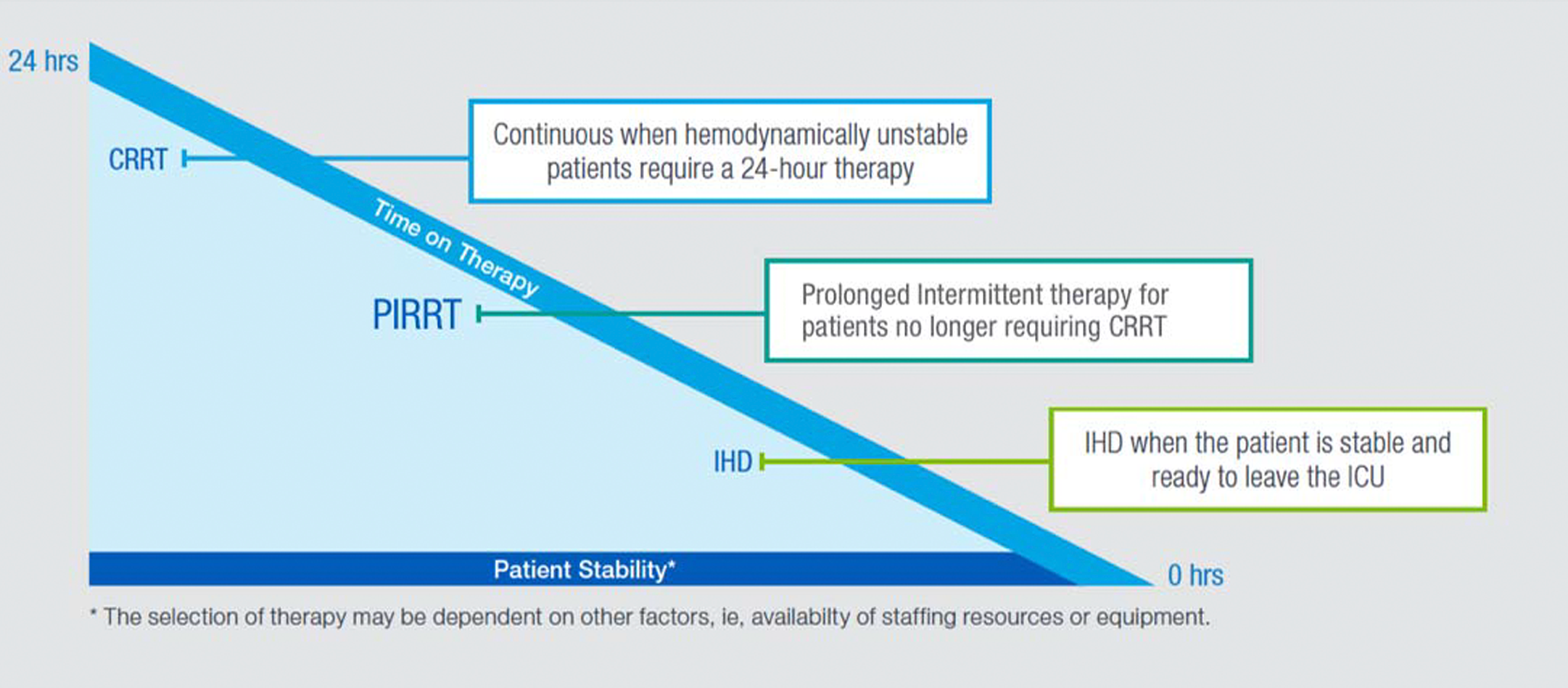
Unique volumetric fluid balancing system contributes to cost savings.
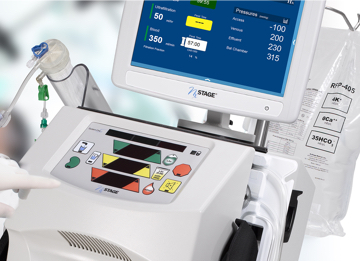
- Eliminate the need for treated water sources and related testing/maintenance
- Eliminate waste bags, reducing cost of bags and interruptions in patient therapy
References:
- Concepcion LA, et al. ARF requiring dialysis; use of shift CVVHD vs conventional dialysis. J Am Soc Nephrol, 2009; Suppl, F-P01557 (Abstract).
- Gashti CN, Salcedo S, Robinson V, Rodby RA. Accelerated venovenous hemofiltration: early technical and clinical experience. Am J Kidney Dis. 2008; 51(5):804-810
Patient and Staff Safety
- The NxStage System One and disposable components incorporate innovative safety features to help minimize risk to patients and employees.
- PureFlow™ B pre-mixed therapy solutions, available in a wide range of electrolyte formulations, can help correct and manage acidosis and reduce potential risks of compounding errors.1
- Fully-integrated Cartridges available with SecureClip® reduce the risk of blood loss from accidental tubing disconnects.
The Department of Labor's Bureau of Labor Statistics (BLS) cites more than 35,000 back and other injuries among nurses every year; severe enough to miss work.2
- A unique volumetric fluid balancing system built into the disposable cartridge allows direct-to-drain waste lines, eliminating the need to lift, carry, and empty waste bags, reducing the risk of back injury or effluent splash back
- Use of one small portable system eliminates the need for employees to transport heavy conventional IHD equipment to and from the ICU.
- Needleless luer valves comply with needle-free policies and legislation and protect air from getting into the circuit.3
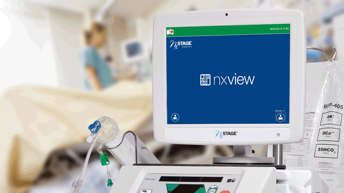
NxView permanently stores, retrieves and protects treatment data from unintended changes by users or viruses.
Increased Nursing Competencies
References:
- Kraus MA. Selection of Dialysate and Replacement Fluids and Management of Electroyte and Acid-Base Disturbances. Seminars in Dialysis; Vol 22, No 2 (March-April) 2009 pp. 137-140.
- http://www.bls.gov/news.release/osh2.t18.htm
- Needlestick Prevention and Safety Act, 106th Congress, Public Law 106-430, 2000.
Improve infection control and reduce infectious disease exposure risks
According to the CDC, on any given day, about 1 in 25 hospital patients’ has at least one healthcare-associated infection.1
Needlesticks occur every day
- On average, more than 1,500 needlesticks and other sharps injuries occur daily in the United States2
- It only takes one needlestick to transmit up to 30 blood-borne pathogens, including HBV, HCV, and HIV3
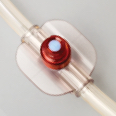
Eliminate the risk of needlestick injuries with needleless luer valves.
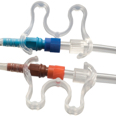
Reduce the risk of staff exposure to patient blood with the SecureClip®, which augments patient access connections.
The consequences of 1 needlestick
- The potential changes to health and the stress of the testing process can be devastating for the affected caregiver.
- A dialysis provider may incur healthcare costs up to $4,8383
Infectious Diseases

The NxStage System One is designed to provide a safe, simple and compact renal replacement system with several unique features that may effectively reduce the risk of exposure to blood and bodily fluids for healthcare workers caring for patients with infectious diseases, including Ebola-positive patients requiring renal replacement therapy (RRT), consistent with CDC Guidelines.4
- Features of fully integrated disposable cartridges help reduce the risk of exposure and transmission.
- The innovative volumetric fluid balancing chambers incorporated into a disposable cartridge provide flexibility in waste disposal.
- The small size of the NxStage System One makes it easy to transport and takes up little space in a potentially crowded environment.
Reduce The Risks In Your ICU4
Reduce the risk of exposure to patient’s blood and the transmission of disease or infection with fully integrated and disposable fluid circuits.
Dispose of waste safely without having to lift, carry, or empty waste bags.
Effluent drains directly into the plumbing system or other receptacle depending on hospital policy.
Minimize the number of nursing interventions required to manage the equipment.
References:
- HAI Data and Statistics. 2016. http://www.cdc.gov/hai/surveillance/
- NIOSH Alert: Preventing Needlestick Injuries in Health Care Settings. Washington, DC: National Institute for Occupational Safety and Health, 1999. (Publication no. 2000-108.).
- O’Malley EM, Scott RD, Gayle J et al. Costs of management of occupational exposures to blood and body fluids. Infect Control Hosp Epidemiol. 2007:28:774-782.
- Infection Prevention and Control Recommendations for Hospitalized Patients Under Investigation (PUIs) for Ebola Virus Disease (EVD) in U.S. Hospitals http://www.cdc.gov/vhf/ebola/hcp/infection-prevention-and-control-recommendations.html
Contact us for more information
For more information on NxStage System One with NxView, complete the form below and a NxStage representative will contact you.
Risks and Responsibilities
Renal replacement therapy, as with any medical therapy is not without risks. The decision of which therapy and medical device to use should be made by the physician, based on previous experience and on the individual facts and circumstances of the patient.
There is no literature demonstrating that one therapy is clinically better than the other.
The use of anticoagulation is at the discretion of the prescribing physician.


